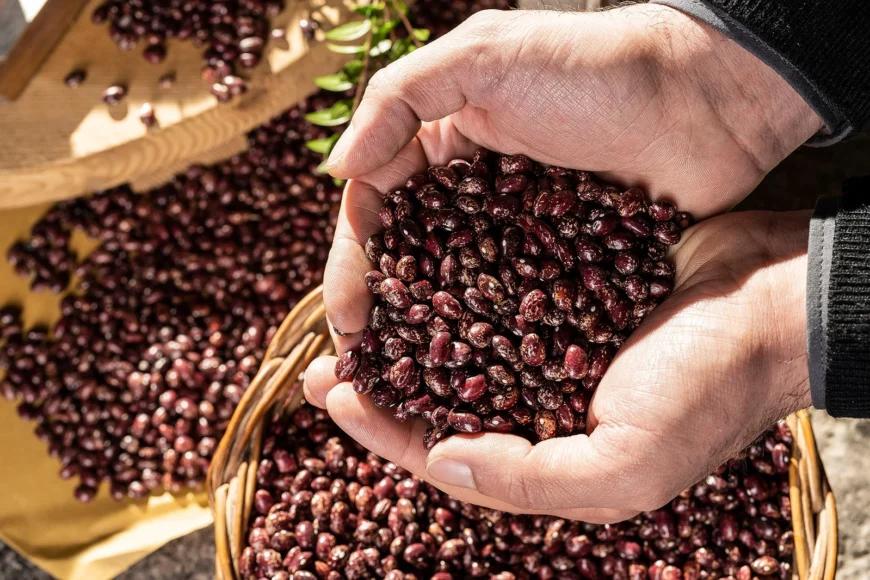Ischia has an indigenous variety of the uniquely named legume: the tusky bean was in danger of extinction, now – instead – it is the icon of the hilly area that turns to the east.
Planting in mid-March, with the waning moon. Harvesting must wait until late summer. Thus it will accompany the winters of Ischitans, and not only, flavoring peasant soups with retro charm.
His majesty the tampa bean, red gold of the island with an earthy soul: is among the symbols of Campagnano and its hills, from Piano Liguori to Mount Vezzi, and-again-as far as San Pancrazio and the Sgarrupata, the Schiappone and Chiummano, precisely where the bartering between peasants and fishermen, the “cala cala,” used to take place. The first exchanged garden surpluses for the catch: facilitating the quid pro quo were woven baskets.
Today the island to the east also offers, with memorable sunrises, an indigenous and exclusive variety of legume, with a rich and aromatic flavor, almost a panacea. And to say that it seemed destined for ineluctable extinction: resilient, instead, was the dogged action of a few farmers-six or seven, no more-who continued to cultivate it, with production that at its lowest was around two quintals per year. Very little.
Bagged bean, a bridge between the past and the future
The wind has changed, fortunately. And from the reclamation of seven thousand square meters of land, along with agrowing focus on zero kilometer and identity food, came the revival of the ginger bean. Which is so named because of the decidedly unique way in which the plant-an indefatigable creeper-twists itself around the supporting canes that are essential for cultivating it: reminiscent of the laces of ancient bagpipers’ shoehorns, come to think of it.
And if today Ischia has elected the bush bean as the banner of its agriculture, it is also thanks to the industrious activity of associations such as “Slow Food,” which first-through the local convivium-believed in it.
Its flagrancy, which withstands four hours of cooking, is thus today a passepartout among generations of islanders: this legume tells what Ischia once was, anticipates what it will be. A bridge between the distant past of agriculture and an experiential tourism that enhances crops, especially those that are so distinctive.
And that this bean was sui generis was understood as early as 1854 by the botanist of the Bourbon court of Naples, Giovanni Gussone, who was surprised by that variety so unique that it deserved an ad hoc card in his collection on the flora of the island of Ischia.
Bunting bean, heritage of Ischia's biodiversity
“Today, our bush beans are a heritage of the island’s biodiversity,” says agronomist Silvia d’Ambra. So much so that they have entered the territory’s Traditional Agri-food Products, PAT. And also to inspire the cuisine of local trattorias and even star chefs: “Zampognari bean soup used to be eaten with a quarter of an onion used as bread,” says Nino Di Costanzo. Father Sabato was from a farming family, mother Concetta carried the tradition of a fishing family: in him converge, here, the two souls of the island. And of the village of Campagnano, the beating heart of Ischia bean cultivation par excellence, today Di Costanzo is a heartfelt ambassador: “In the Vigna del Lume area there was an extraordinary wealth of lentils, from which the people of Ischia made a delicious soup, seasoned simply with rosemary and wild herbs.” But that is another story.




